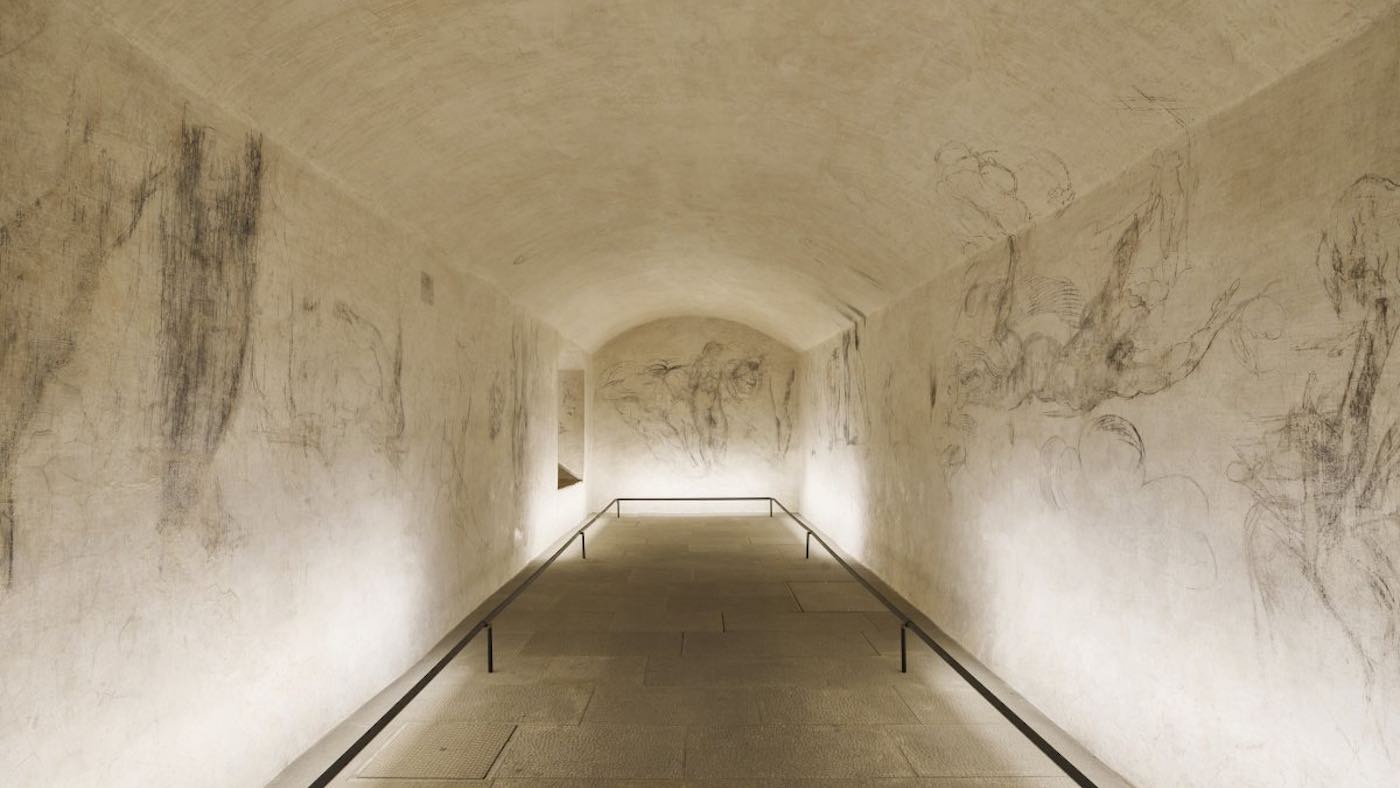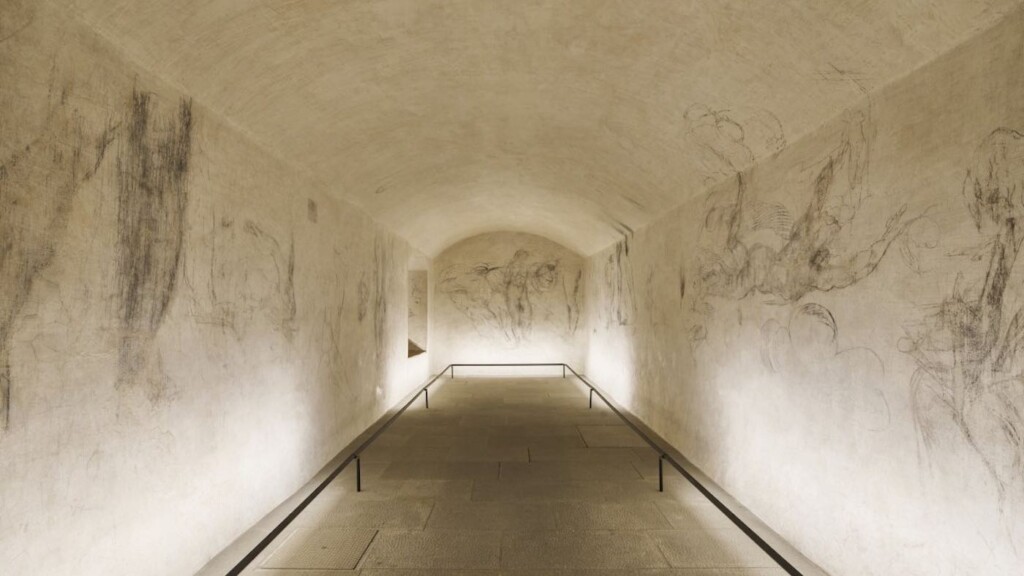
The walls of a “secret” underground room discovered in 1975, covered in sketches by the persecuted Michelangelo, are now being unveiled to the public for the first time.
The Italian Renaissance master sculptor who carved David and decorated the ceiling of the Sistine Chapel hid in the tiny chamber for about two months in 1530 while evading a death sentence ordered by Pope Clement VII.
The pope, who was a member of the powerful Medici family, was enraged at the artist for aiding a rebellion against their reign, the same family whose magnificent tombs Michelangelo carved in the chapel just above his hiding place.
50 years ago, museum officials were searching for a suitable space to create a new exit for tourists visiting the Medici chapel, where the artist had adorned the family tombs with sculptures depicting the passing of time.
They discovered a trapdoor beneath a wardrobe that led to a 10-foot wide room. Stripping two layers of plaster from the walls revealed the existence of the drawings sketched by the maestro using charcoal and sanguine wooden sticks.
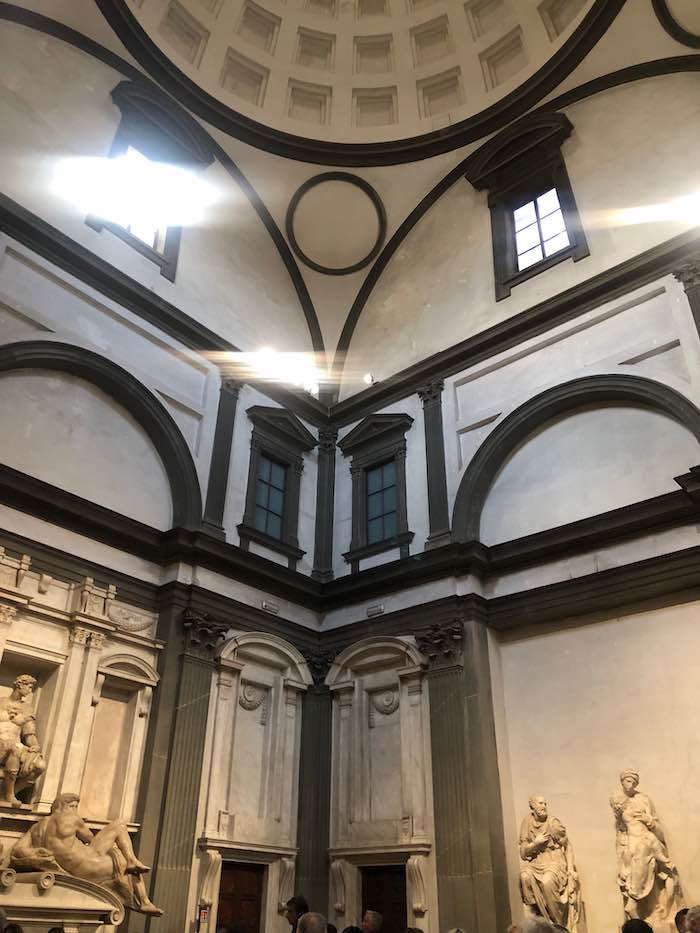
“He drew things from the past as if he was taking a trip down memory lane … it was like having an album of his works,” said Paola D’Agostino, the director of the Bargello Museums, which includes four other state museums besides the Medici Chapels.
“(It’s) a place of extraordinary charm,” said Massimo Osanna, Italy’s Director General of Museums.
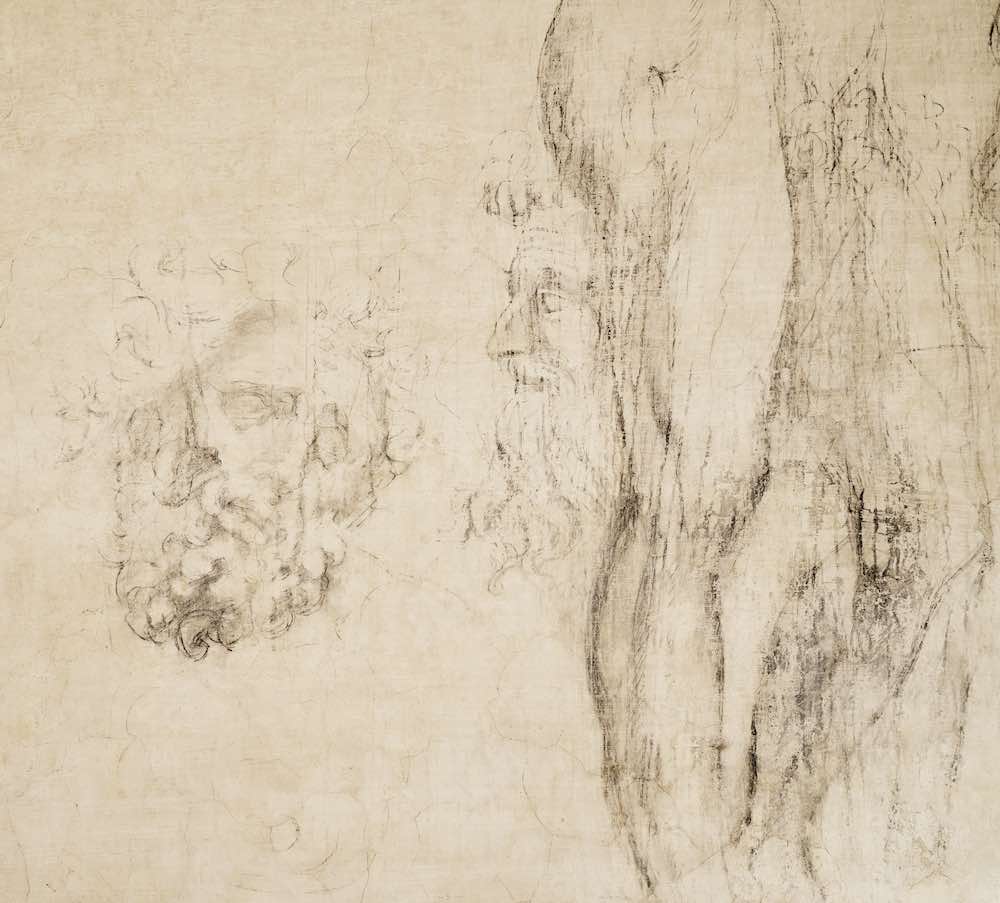
Public access will be allowed on an experimental basis until March, 2024, with only 4 people at a time able to view the room, in order to maintain adequate conservation conditions for the precious drawings, with alternating periods of exposure to LED light and prolonged periods of darkness.
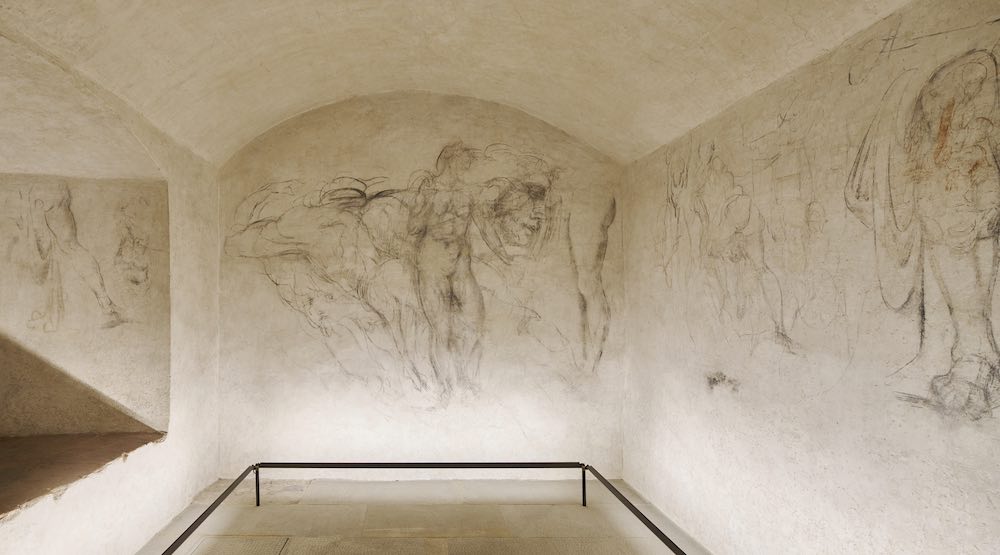
“This very small environment is truly unique due to its exceptional evocative potential… traced by signs that attest to great clarity of design,” commented Francesca de Luca, curator of the Museum of the Medici Chapels.
This, despite the looming wrath of the Medici pope due to Michelangelo’s activity as head of fortifications for the short-lived republican government, which had expelled the family in 1527. It was the Prior of San Lorenzo—the larger Basilica to which the smaller funerary chapel designed by Michelangelo is attached—Giovan Battista Figiovanni, who hid Michelangelo in the room which has a small window where he could see the feet of passersby.
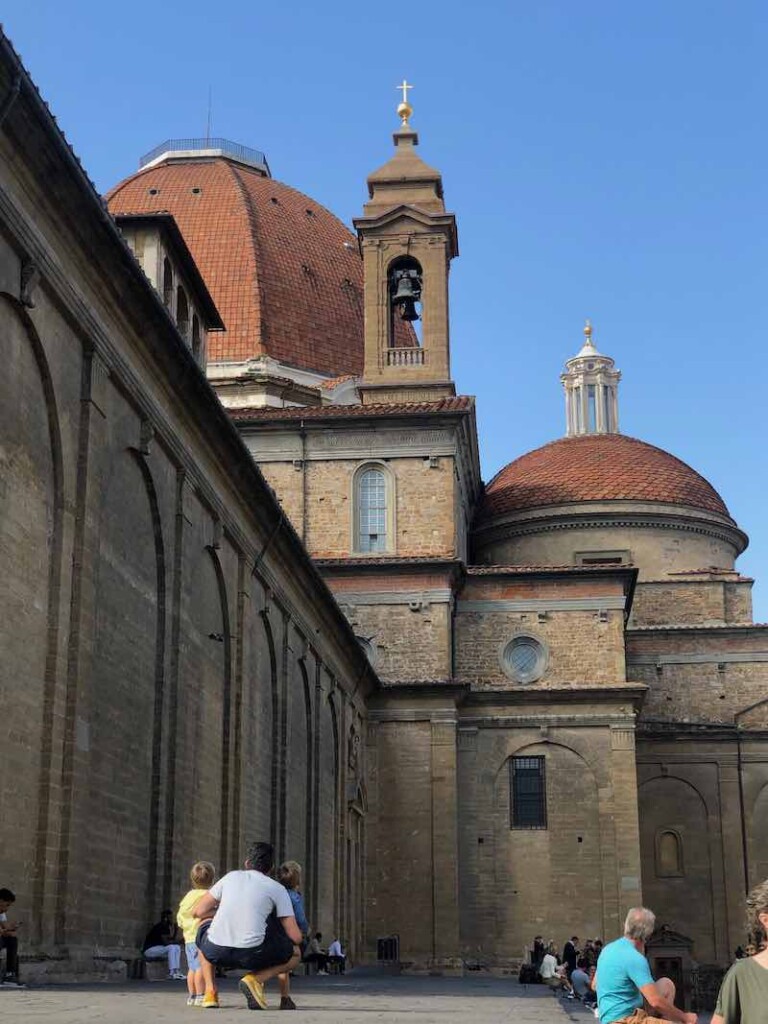
After about two months of self-imprisonment (beneath the smaller chapel pictured above), Michelangelo obtained the family’s forgiveness and resumed his Florentine duties. But the artist abandoned Florence four years later, taking up residence in Rome, never to return. However, he remained so beloved in Florence that the Medici family stole his remains from Rome bringing them back to be entombed in the local Basilica Santa Croce.
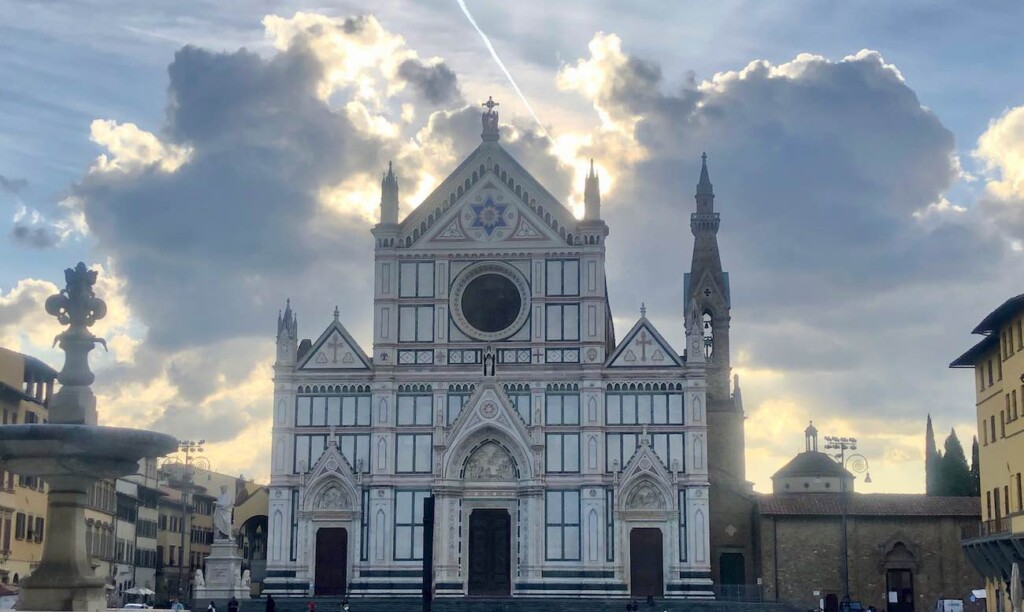
The small room, 10 meters long by 3 meters wide and 2.50 meters high at the top of the vault, had been used as a charcoal deposit until 1955 and then unused, remaining closed and forgotten for decades, under a trap door covered by furniture.
According to Dal Poggetto, the artist used the walls of the small room to sketch some of his past projects including works from the New Sacristy above him, like the legs of Giuliano de’ Medici carved for his tomb, along with quotations from antiquity.
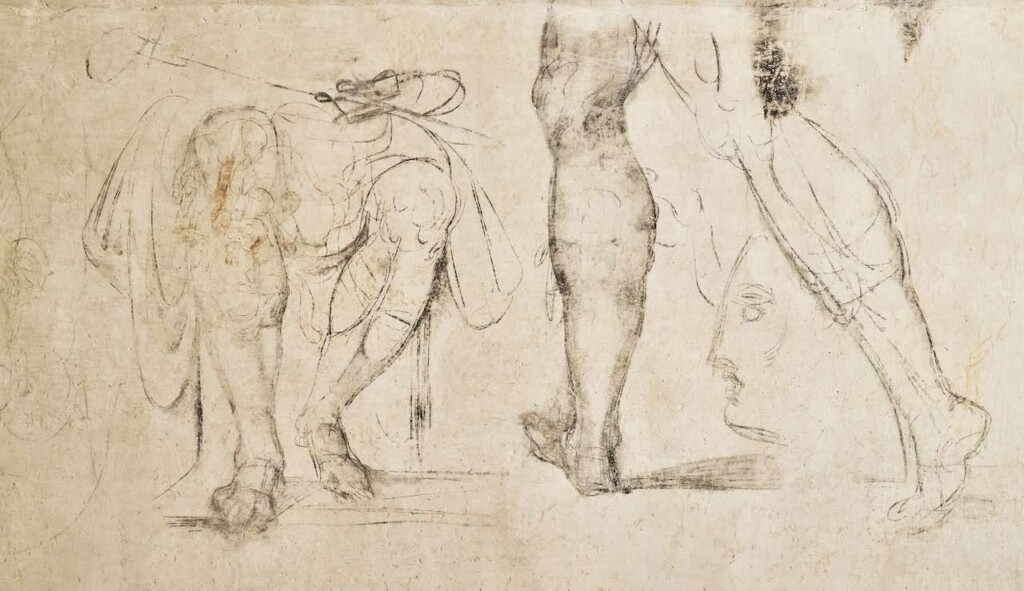
Reservations to visit the secret room will be limited to 100 people per week until March 30 and cost 20 euros, though visitors must also pay for entry to the San Lorenzo site (10 euros) plus a 3 euro reservation charge. Youth aged 18-25 get a discount.
“This place grants today’s visitors the unique experience of being able to come into direct contact not only with the creative process of the maestro, but also with the perception of the formation of his myth as a divine artist,” said Francesca de Luca, curator of the Museum of the Medici Chapels, in a press release.
SHARE The Extraordinary Moment With Italian Art Lovers on Social Media…




















